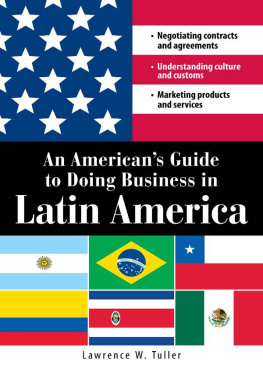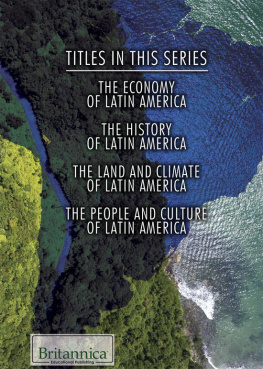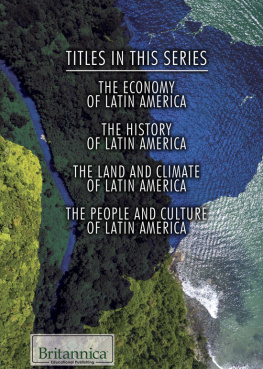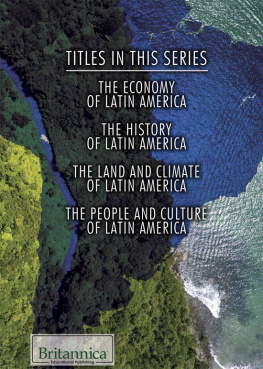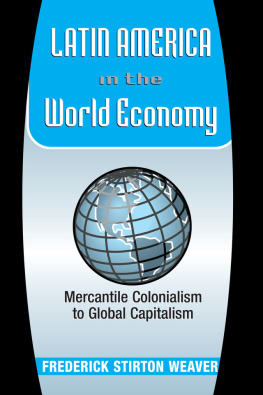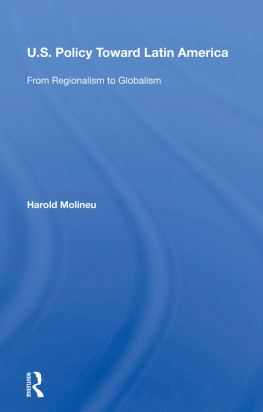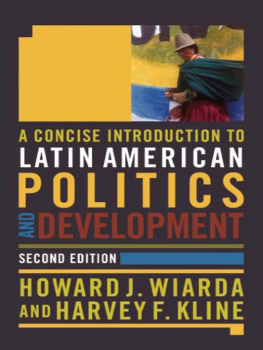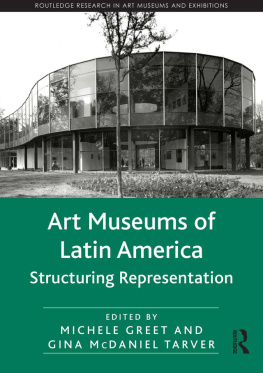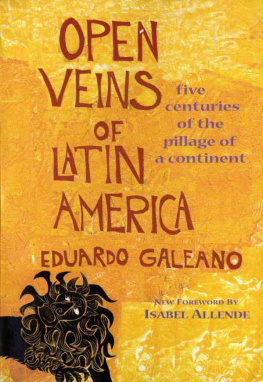ALSO BY LAWRENCE W. TULLER
Exporting, Importing, and Beyond
Mastering Markets in South America
Strategic Marketing in the Caribbean
Strategic Marketing in Central America
Strategic Marketing in South America
Doing Business in Latin America and the Caribbean
The World Markets Desk Book
The McGraw-Hill Handbook of Global Trade
and Investment Financing
Going Global: New Opportunities for Global
Companiesto Compete in World Markets
Negotiating contracts
and agreements
Understanding culture
and customs
Marketing products
and services
An Americans Guide
to Doing Business in
Latin America

Lawrence W. Tuller

CONTENTS
Chapter 1
The New Latin America
Get out of the way, India. Move over, China. Stand back, Southeast Asia. Here comes the new kid on the block, a reborn Latin America. Bursting with enthusiasm. Ready to erupt with a dynamism unseen in the Western Hemisphere since the Industrial Revolution. Latin America, exuding an economic exuberance that is sure to be the envy of the developing world. And U.S. exporters have seen this coming. Last year alone they shipped four-and-a-half times as much product to this region as they did to China, twenty-four times the amount they shipped to India, and twice as much as they shipped to the United Kingdom, Germany, and France combined.
But doing business in Latin America is not easy. A constantly changing landscape makes long-term strategies especially difficult. If there is one truism about this region, it is that if you dont like the way the politics, economics, and social conditions are going now, wait til tomorrow and they will change.
Latin Americas never-stopping politico-economic pendulum swings wildly to and fro. From dictators to freely elected presidents to elected autocrats. From liberal socialist governments to reactionary right-wing rule to populism. From hyperinflation to modest economic growth to rapidly rising prices. From shattered banking systems to stable financial markets to bank failures. From protectionist trade to free trade to the nationalization of entire industries. From isolation to open borders hungry for foreign investment to forced joint ownership of projects with government. Such a wildly swinging pendulum muddies the waters for trade and investment. Misunderstanding the North and misunderstood by the North, Latin governments and their citizens continue to ride the fringes of economic progress, unable to penetrate the psyche of either Republican or Democratic administrations in Washington.
Part of the problem is the enormous mixture of cultures that comprises Latin America and confuses Americans.
Mexico, the Caribbean nations, Central America, and South Americain fact, everything south of the U.S. border comprise what we commonly call Latin America. Imposed by the Spanish conquerors of the sixteenth and seventeenth centuries, the Spanish language dominates the region, but other languages are also spoken. Portuguese is the official language in Brazil; its English in Guyana, Dutch in Suriname, and French in French Guiana. In the Caribbean, English, Dutch, French, and Creole are spoken along with Spanish. In Central America, English is the language of Belize. Spanish is official in all other countries. One-third of Guatemalas population is indigenous and speaks a mixture of Mayan dialects.
Culturally, the region is equally mixed. In countries where Spanish or Portuguese is the official language, the Hispanic culture and Catholic religion inherited from Spain and Portugal are predominant. In Guyana, however, more than 50 percent of the population is descended from East Indians and practices the Indian culture and Hindu religion. In Haiti, a combination of French and African cultures has nurtured the Voodoo religion. The English-speaking Caribbean mostly consists of African descendants influenced by a European heritage, creating a unique West Indian culture that has welcomed Pentecostal preaching. Fidel Castros atheism and its penetration of the Cuban culture is unique in the region.
In Central America, Peru, Bolivia, and Ecuador, as well as in certain parts of Brazil, mestizo is the predominant race. A mestizo is a person of mixed ancestry, especially of mixed Spanish or Portuguese and indigenous Amerindian.
Argentina is strongly influenced by descendants of settlers from Northern and Southern Europe, especially Italy and Spain. In the Caribbean, the United States owns a territory (the English-speaking Virgin Islands) and a commonwealth (Spanish-speaking Puerto Rico).
Size also matters, especially in the business world. Brazil dominates the region, with 186 million people and a geographic size equivalent to the continental United States. Its industrial base is very similar to that of the United States. Manufacturing, retail, and service industries are all healthy and growing. At the other end of the spectrum, Haiti and Nicaragua are the two poorest countries in the region with gross domestic product (GDP) per head of $1,600 and $2,400, respectively. These two countries, along with Bolivia and Suriname, stand in stark contrast to the sophisticated urban centers of So Paulo, Rio de Janeiro, Buenos Aires, Santiago, Bogot, and Mexico City.
Political upheaval and violence have characterized Latin America for centuries. Prior to 1989, when a democratic wave washed over virtually all Latin American countries, Peru had experienced only four years of elected governments, Ecuador eight years, Brazil one year, and Uruguay barely four months. Bolivia had gone through 180 presidents in 160 years. Peronist Argentina had been little more than a police state for seventy years. Paraguays iron-fisted president, Alfredo Stroessner, played host to thousands of Nazi war criminals. For two decades prior to 1960, Venezuela was governed by autocratic dictators. Between 1946 and 1966, more than 300,000 Colombians were killed by their own government. Even after 1989, under democratically elected governments, Brazilian police with automatic weapons wiped out scores of homeless children; Venezuelans twice rioted against their president and eventually elected a notorious autocrat; Perus Shining Path terrorists massacred Peruvians and foreigners at will; Colombian drug gangs, protected by the army branch of the Communist party (called Fuegas Armadas Revolucionarias de Colombia, or FARC), assassinated presidential candidates and judges, while bandits ruled mountain villages. Guatemala, El Salvador, and Nicaragua suffered years of right-wing and left-wing bloodshed, with death squads massacring indigenous tribes and squashing any and all resistance.
In such a setting, its easy to understand why managing exports to the region, sourcing materials or parts from Latin American suppliers, or opening and operating Latin American facilities are at best difficult tasks and at worst, nightmares. But cultural mores, political upheaval, and chaotic violence are only some of the reasons that doing business there is difficult. An array of other external market forcesthat is, market forces beyond the jurisdiction of corporate boardrooms and the control of company management determines to a very large extent the types of pricing, distribution, packaging, production scheduling, employee incentives, and financing policies that will work. These external forces create market environments that are as different from those in the United States, Canada, or Europe as night is from day.
Next page
